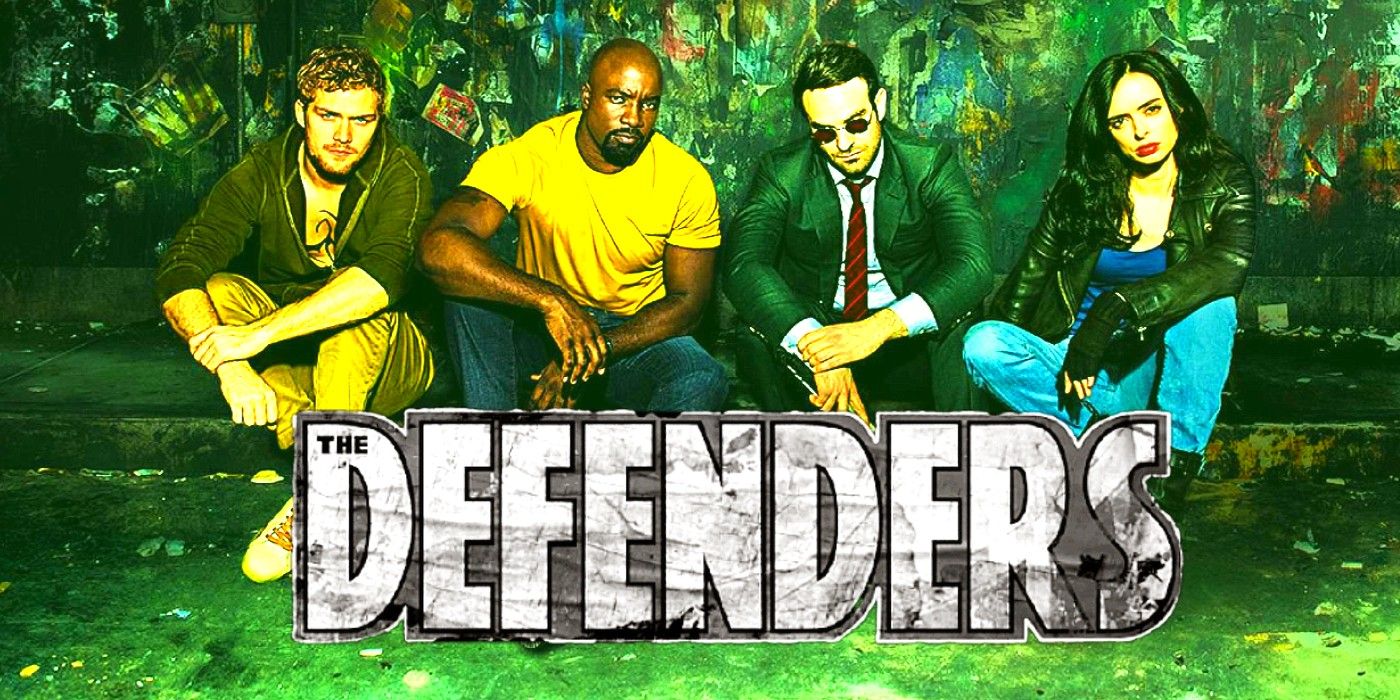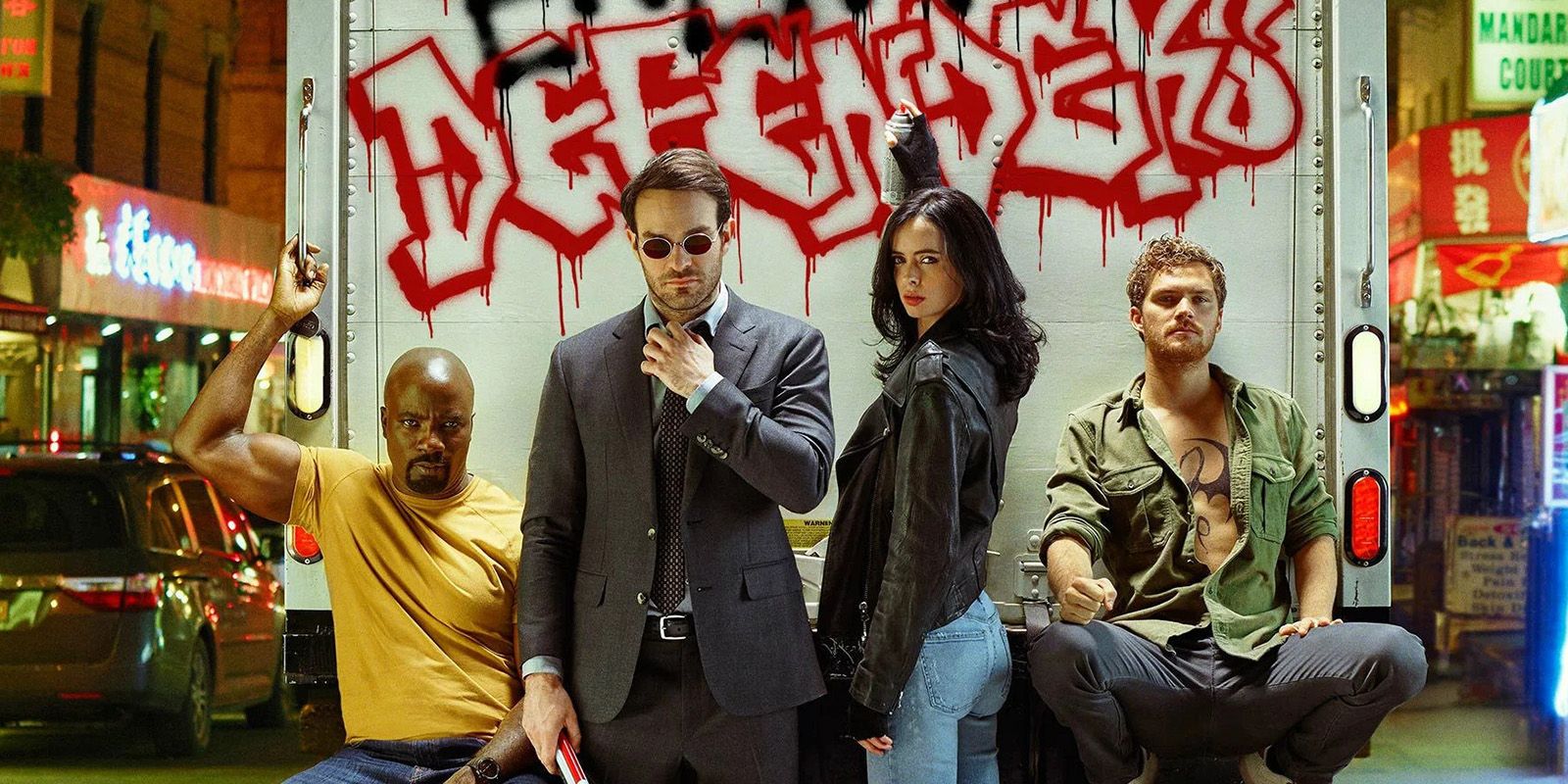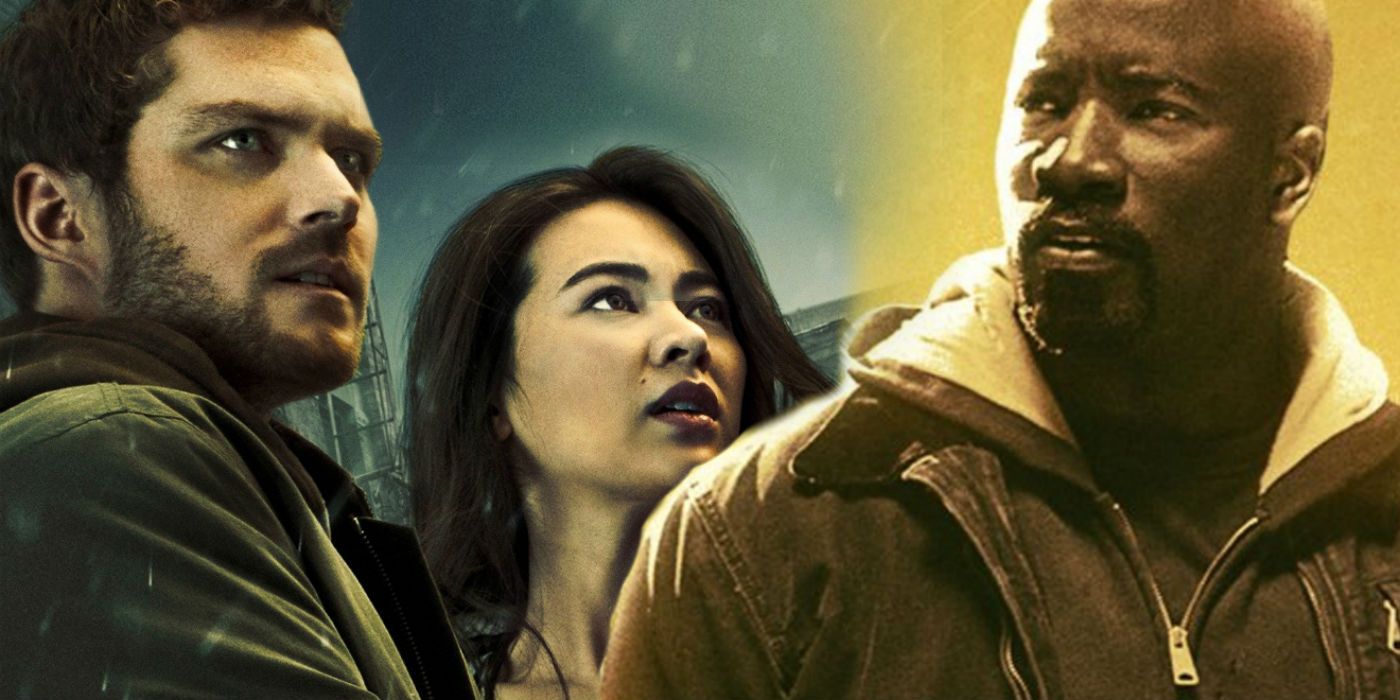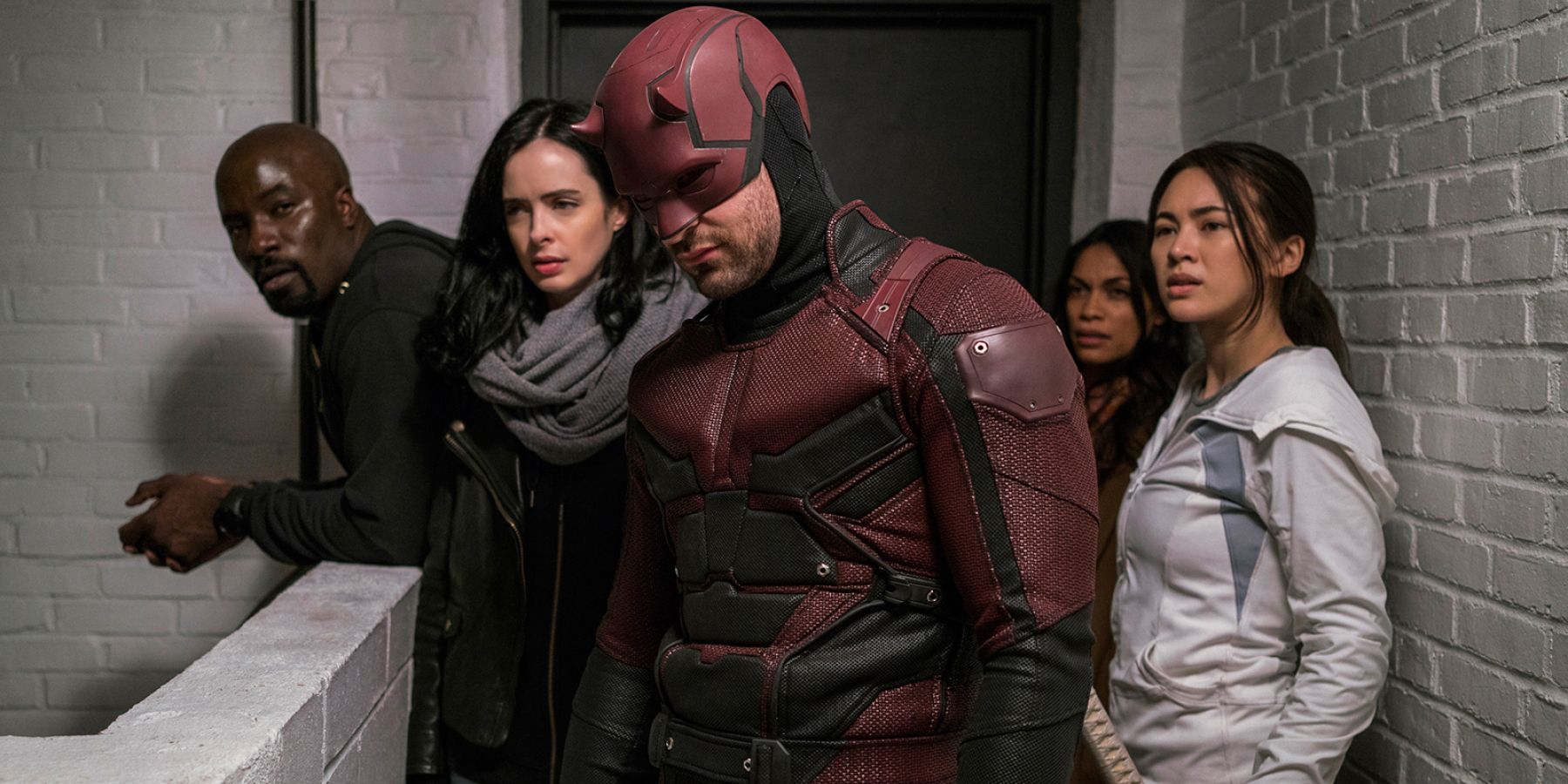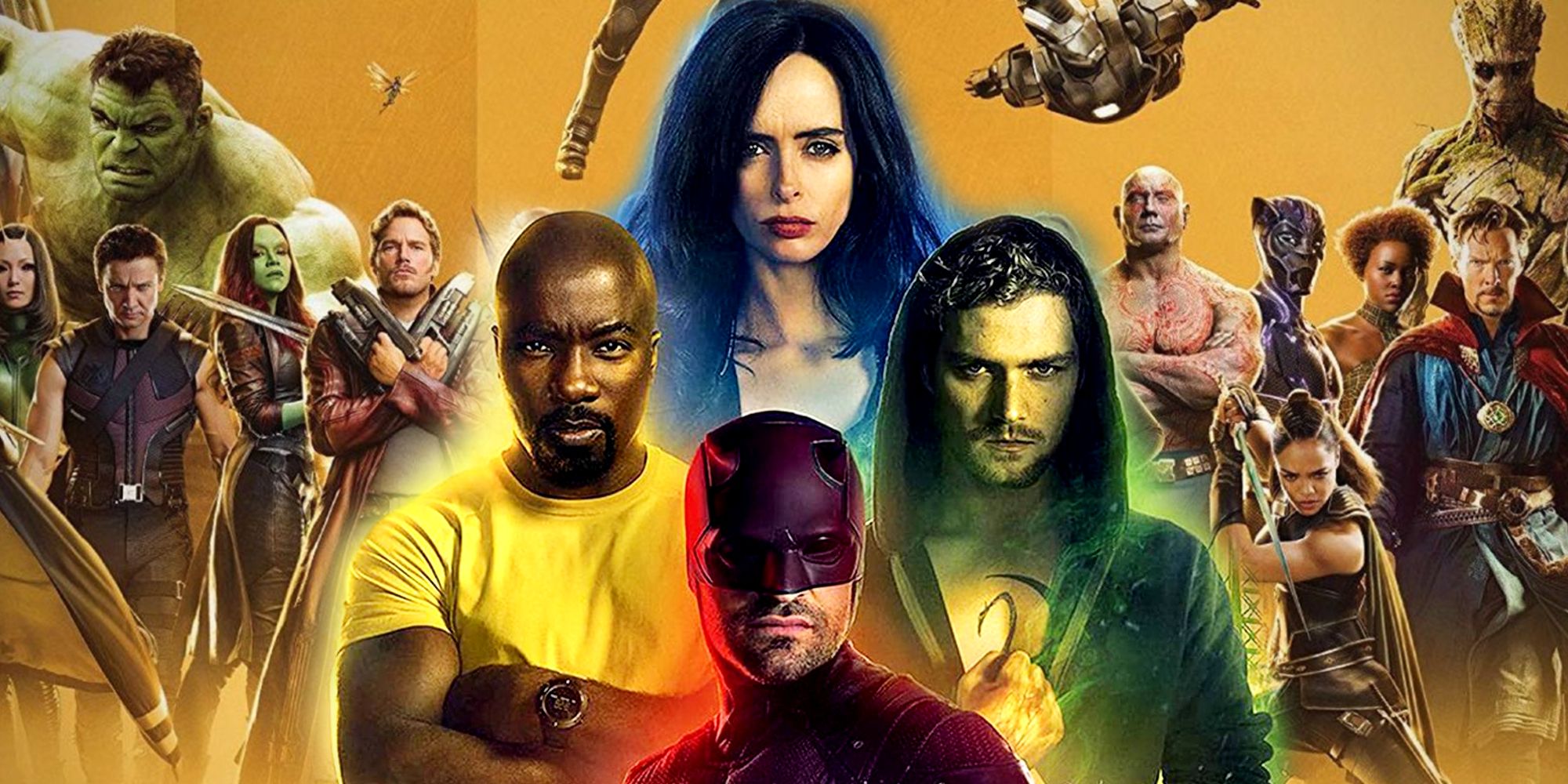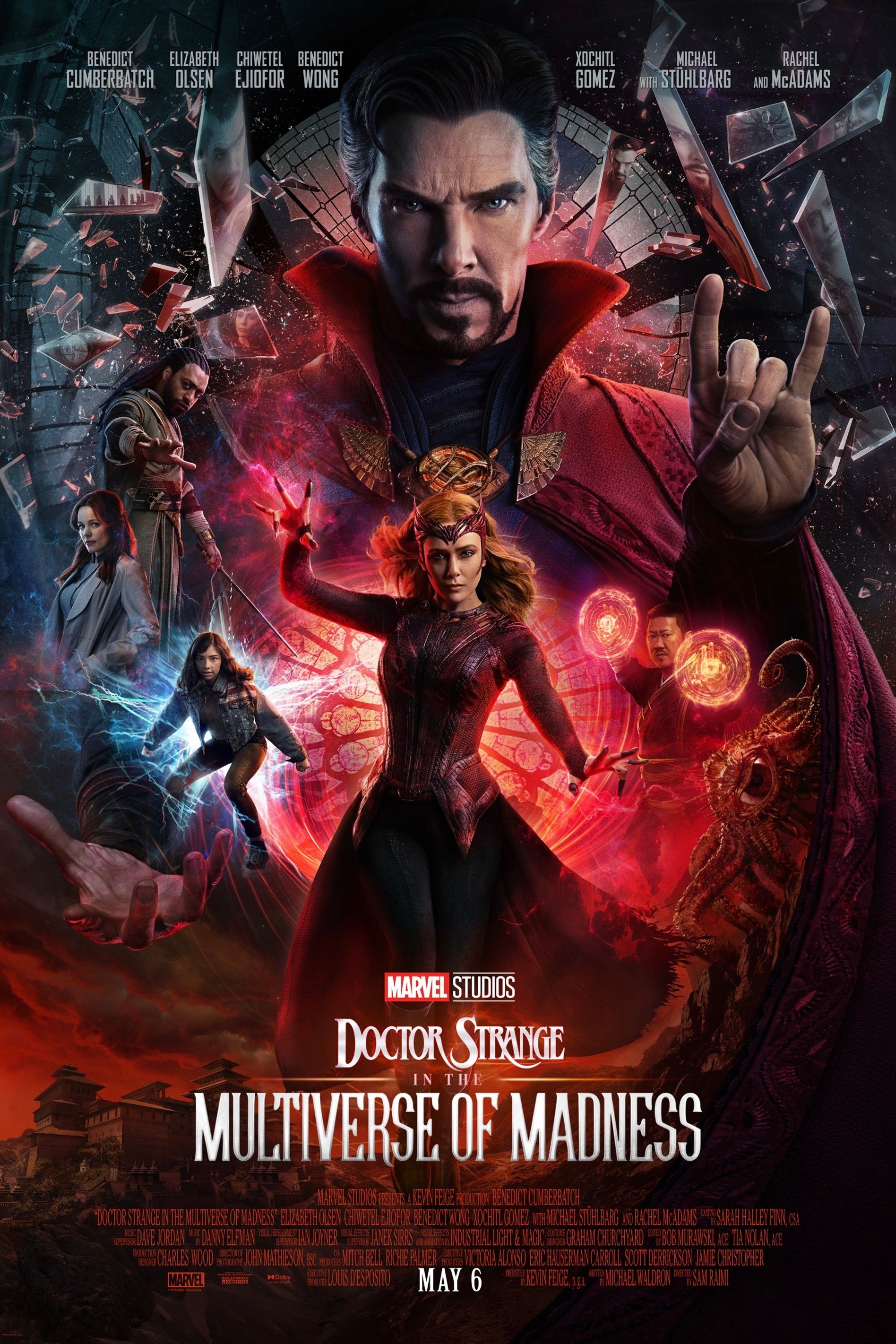The Defenders was supposed to be television's team-up answer to the Avengers movies, but the Marvel crossover event ended up being largely disappointing despite its best intentions. Netflix partnered with Marvel to make shows featuring a handful of Marvel's street-level characters, who were considered (at the time) to be too violent for the PG-13 audience the MCU catered to. The idea was that the Netflix Marvel shows could be darker and grittier than their cinematic counterparts, staying true to their source material.
Marvel followed the MCU's Phase 1 movie template for the heroes in The Defenders. Jessica Jones, Iron Fist, Luke Cage, and perhaps most well-known, Daredevil, all got individual series to introduce the characters in their own stories. Daredevil was the first show out of the gate in April 2015, followed quickly by Jessica Jones in the fall. Luke Cage premiered in April 2016, and Iron Fist made his debut in March 2017. The Marvel heroes then came together for a team-up show, The Defenders.
Similar to Iron Man, Daredevil season 2 was released before the team-up crossover series, with The Defenders airing in August 2017. Various creative decisions and other reasons though turned what was once a highly anticipated TV event into a commercial and artistic disappointment. All the Marvel series got one more season each following The Defenders, as well as a couple of seasons of The Punisher (after the character's introduction in Daredevil season 2). The failure of The Defenders, though, spelled the beginning of the end for the Netflix shows. Here's why.
The Defenders Should've Been The Ultimate Marvel TV Team-Up
When the Marvel Netflix shows that would result in The Defenders were first announced back in 2013 the MCU was still on its upward trajectory from Phase 1. It had achieved massive success with its breakout hit movie The Avengers and was plowing ahead, setting up the rest of The Infinity Saga. While the MCU is taken for granted nowadays it shouldn't be forgotten just how groundbreaking and risky an idea it was at the time to have interconnected storytelling across multiple franchises. The Avengers was a gamble that paid off brilliantly, and the potential in the shared universe idea excited everyone in the industry. Numerous studios and franchises rushed to copy the MCU's formula, with Warner Bros. DCEU and MonsterVerse, Universal's Dark Universe, and The CW's Arrowverse all attempting to replicate Marvel’s success. Netflix also saw the potential and positioned The Defenders to be the ultimate Marvel TV crossover team-up event.
Netflix's interconnected Marvel shows had everything going for them, on paper at least. As a team, The Defenders aren't as famous as The Avengers, but the shows could ride the wave of excitement generated by the MCU movies and bring in an established audience ready for a more mature take on superheroes. Marvel also took the correct approach of taking its time introducing the characters in their world and setting up the crossover series, rather than fast-tracking it as was the fate of the DCEU's Justice League. The heroes in The Defenders are all unique in terms of their abilities, personalities, and issues, and have a wealth of source material to draw from the comics. Furthermore, embracing its R-rating also helped it to stand apart from Marvel's other shows like Agents of SHIELD.
The Defenders' Problems Started Before The Show Released
Daredevil and Jessica Jones both received critical acclaim for their first seasons. This initial excitement and anticipation for The Defenders team-up started to wane with Luke Cage, however. Mahershala Ali's character Cottonmouth was set up as the big villain, only to be killed halfway through Luke Cage season 1 and disappointingly replaced with a forgettable and underwritten villain in Diamondback for the rest of the season.
Netflix's 13-episode structure allowed the Marvel shows to take their time with their plots and characters. However, in contrast to the fast pace of the Marvel movies, audiences grew frustrated by the relative lack of action and repetitive dialogue scenes that made up the majority of their runtime. While embracing their R-rating, with the exception of parts of Daredevil, the Marvel shows’ fight scenes were bad, often relying on quick cuts to hide stunt doubles or unconvincing fights, were poorly lit, and repetitive in their choreography. Forced storylines to set up The Defenders' big villains The Hand also got in the way with the heroes’ own stories, and The Hand's wave of interchangeable ninjas didn't do much to help elevate the fight scenes.By the time Iron Fist arrived, audiences had already seen three versions of Netflix’s hero origin story template, and patience was starting to wear thin.
The disappointing lack of connection with the main MCU was also a hindrance. Being set in The Big Apple meant that The Battle of New York from The Avengers was mentioned by The Defenders’ heroes from time to time. But aside from that, there are no cameos or cross-over storylines that make Netflix's Marvel universe feel connected to the Marvel movies. It didn't help that Iron Fist season 1, the final show before The Defenders, was unequivocally bad, meaning that excitement levels for The Defenders had dropped way down before the team-up series even aired.
Why The Defenders Was So Disappointing: What Went Wrong
There are several reasons why The Defenders ended up being so disappointing. The issues from the second half of Luke Cage season 1 and the failure of Iron Fist season 1 meant that audiences weren’t hyped for a team-up event in the way they were for The Avengers. Beyond that, whereas the Marvel movies have their heroes wear distinctive costumes, aside from Daredevil, the rest of the Defenders wear street clothes, making them visually uninteresting. The show's commitment to down-to-earth realism meant that The Defenders didn't feel as epic or special as a fantastical superhero team-up should do. This was compounded by the fact that every individual show was set in New York. Without any change in setting from the previous shows, a sense of repetition and fatigue quickly set in. The Defenders team-up “event" simply ended up feeling like just more of the same.
The Defenders also suffered from the same issues that marred some of the other Netflix Marvel shows. Its action was disappointing and perfunctory in its execution, and the different fighting styles of each hero never really achieved visual distinction to make them interesting. This was further hindered by the aforementioned plain clothes of the Defenders making it hard for them to stand out in dim fight sequences. The darkly lit scenes and dour tone of the show also left it without any sense of fun or excitement.
Perhaps the most disappointing thing, though, was The Defenders' villains; sidelining fan-favorite Electra in The Defenders by having her be mute proved ill-advised. After a couple of strong adversaries with Daredevil’s Wilson Fisk (a.k.a. Kingpin), and Jessica Jones’ Kilgrave, The Defenders gave Sigourney Weaver’s Alexandra nothing of note to do or say. Overall, The Defenders’ villains The Hand were decidedly lackluster and unmemorable, putting into question the justification for needing the heroes to team up in the first place.
The Defenders' Failure Killed Marvel's Netflix Shows
The rise in popularity of original Netflix shows like Orange is the New Black, Stranger Things, and Ozark resulted in The Defenders being lost in Netflix’s algorithm. The scattered release dump of its previous Marvel shows and the bad reputation of some of them also meant that its potential audience wasn’t up to date with every show before The Defenders was released. Along with the numerous problems the show had, The Defenders also ended up being Netflix's least viewed Marvel show. The Netflix Marvel universe never really recovered from the failure of The Defenders, and while Daredevil season 3 and Jessica Jones season 3 did happen after, it was too little, too late. The audience had lost interest, and with the rise of Disney+, the Defenders Netflix shows were all canceled in quick succession in 2019.
That isn't the end of the story for the characters, however. Charlie Cox's Matt Murdock made his MCU movie debut in Spider-Man: No Way Home and Vincent D'Onofrio's Kingpin was a surprise addition to Hawkeye. Kevin Feige and Disney+ have learned from The Defenders' mistakes, and Phase 4's TV shows have established stories and characters that feed into and progress the movies, making it all feel connected. With the Netflix shows now streaming on Disney+, there is even talk of Daredevil season 4. Marvel's willingness to give at least some of the Netflix Defenders characters a second chance is a testament to the potential of The Defenders as a TV version of The Avengers, even if the first attempt was ultimately disappointing.

